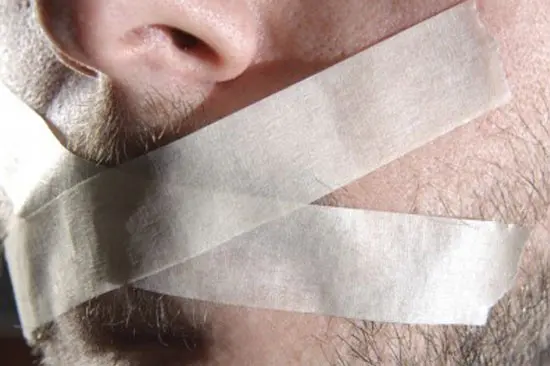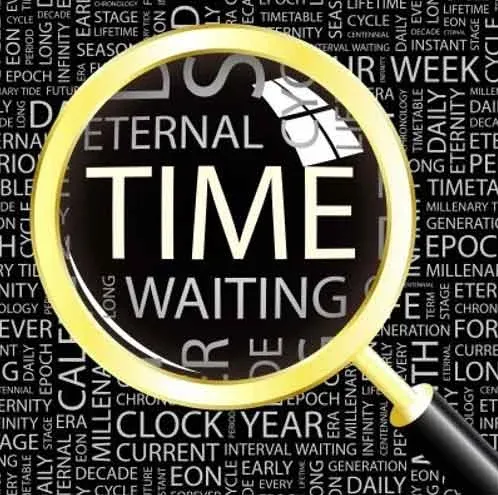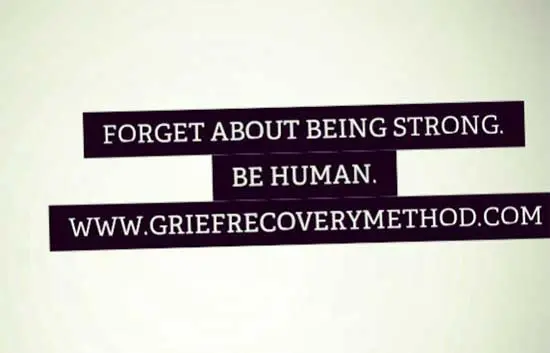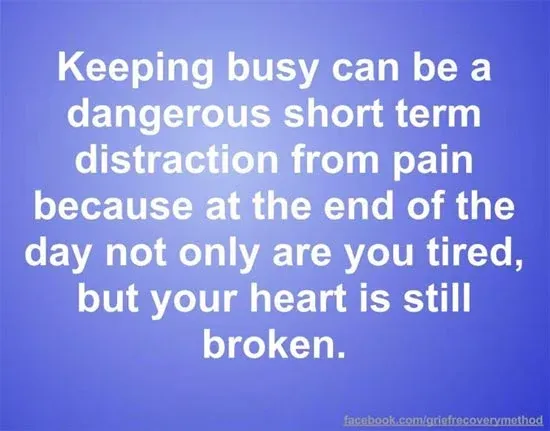Six Major Myths About Grief
Six myths about grief limit us in our ability to deal with the inevitable losses that affect our lives. A grief recovery specialist can help you give way to the change.

By: Cole James
STORY AT-A-GLANCE
- Six myths affect our grieving process and keep us from recovery or completion of what was left emotionally unfinished when someone important to us dies, we get divorced, or when we’re impacted by any of the 40 other life events that can produce feelings of grief
- “Don’t Feel Bad,” “Replace the Loss” and “Grieve Alone” are three myths about grief
- The other three include “Grief Just Takes Time,” “Be Strong and Be Strong for Others” and “Keep Busy”
- You must grieve and complete your relationships to the person (or animal) who died; until and unless you do that, you’re doomed to drag the past into your present and thereby sabotage your future
Editor's Note: This article is a reprint. It was originally published March 25, 2022.
More than 30 years ago, in a speech, John W. James, founder of The Grief Recovery Institute, said, "Grief is the most off-limits topic for conversation in the English-speaking Western World." A quarter of a century later, with more than 500,000 copies of our books in homes and libraries, we'd love to tell you that has changed. But it wouldn't be the whole truth.
In this article, understanding grief and the myths about grief are our main goals. Yes, the word "grief" is sprinkled throughout conversations now and then, and yes, the media refer to "grief counselors" being brought in when there's a tragedy in the news, but the actual topic of grief, or people's reaction to loss and what to do about it, is still off-limits. Why?
That's the question that keeps us up at night. In a world where almost nothing is off-limits anymore, where what used to be regarded as the most private of thoughts and feelings are now revealed openly on talk shows, why is grief still spoken of in hushed tones, or not talked about at all?

Sadly, we think we know the answer. In our books and speeches we refer to the six myths about grief that limit us in our ability to deal with the inevitable losses that affect our lives.
Those myths not only affect our grief, but equally important, they keep us from recovery or completion of what was left emotionally unfinished for us when someone important to us dies, or we get divorced, or when we're impacted by any of the 40 other life events that can produce feelings of grief. The myths are:
- Don't Feel Bad
- Replace the Loss
- Grieve Alone
- Grief Just Takes Time
- Be Strong and Be Strong for Others
- Keep Busy
Let's get started.
Myth No. 1: Don't Feel Bad!
When we list the six myths we believe most limit grieving people, we always start the list with "Don't Feel Bad!" The other five myths are equally damaging in keeping grievers stuck in their grief. But the foundation myth — Don't Feel Bad! — suggests that feeling bad or sad is not an appropriate reaction to a heartbreaking loss.
It is baffling to be told not to feel bad as you try to make sense of the normal and natural emotions you experience, for example, when someone meaningful in your life dies.
In fact, by the time a child in our society has reached the age of 15, she or he has received more than 23,000 inputs suggesting that not only should they not feel bad in reaction to a grief event, but that they shouldn't share those feelings with others. That second part leads to one of the other major myths, "Grieve Alone."
We never compare losses and we never compare myths. But we could start our list with any of the six and still wind up with the same inaccurate and unhelpful conclusion, which is that our sad, painful, or negative feelings are out of bounds, and that by communicating them, we're burdening others with our feelings.
Here's a small excerpt from page 77 of The Grief Recovery Handbook to illustrate the fact that very young children are being taught not to feel what they feel and not to talk about it:
A little child has come home from preschool with their feelings hurt by events with the other children on the playground. Mom, Dad, Grandma, or any other caretaker says "What happened?" The child responds, tearfully, that one of the kids was mean to her. The caretaker says, "Don't cry, here, have a cookie, you'll feel better," thus setting the child up with a lifetime belief, from an important authority source, that feelings can be fixed with food.
Upon eating the cookie, the child feels different, not better, and for the moment is distracted and forgets about the incident on the playground. However, there has been no completion of the emotional pain caused by the event.
The event and the feelings attached to it are now buried under the cookie, the sugar, and the distraction. If the child were to bring it up some time later, the child would probably be told, "We don't cry over spilled milk," as if to say that it is not okay to bring it up again.
So it must stay buried. As human beings, we are equipped with the capacity to feel and express all emotions — happy and sad, and everything in between. But if our earliest learning tells us not to feel bad, and if that teaching comes from parents, teachers, and other adult authority figures, then we have almost no choice than to believe our elders and try to repress or bury our naturally occurring sad or painful feelings.
Another essential point is that we would not be able to perceive or feel our happiness if we could not perceive and feel our sadness. We must accept and honor both ends of that spectrum and not rob our children of their normal and natural reactions to the feeling they experience when either happy or sad things happen to them or to the people they love.
When we rob our children of the freedom to feel and express their entire range of emotions, they carry that incorrect idea into the rest of their life. We believe that a host of problems in all life areas are connected to the inability to access and appropriately communicate our feelings in the moment we have them.
Myth No. 2: Replace the Loss

The second myth about grief is "Replace the Loss." For most children, the first time they hear that phrase is after a pet dies. What they commonly hear is:
"Don't feel bad, on Saturday we'll get you a new dog."
If you look closely, you'll notice that the first myth, Don't Feel Bad, acts as a preamble to the promise to get the child a new dog, as if Replacing the Loss could somehow diminish the pain and sadness caused by the death of the cherished pet. Rather than soothe or comfort the child in their grief, the combination of Don't Feel Bad and Replace the Loss acts to confuse the child, and make him feel that being sad or feeling bad is not acceptable or appropriate.
Worse, he's led to believe that if he can just forget about the pet who died, and throw himself into a new relationship with a replacement pet, everything will be okay. But relationships are not replaceable like light bulbs. They cannot be replaced with the flick of a switch.
Most of us don't have emotional relationships with light bulbs or other inanimate objects, but we sure do have emotional connections to people and pets. By the time most children are 5 or 6 years old, they've already been introduced to the dangerous combination of Don't Feel Bad and Replace the Loss when dealing with their grief.
The problem compounds in young adults when dealing with grief and loss. The problem then gets confirmed and compounded along the way toward adulthood. When a youngster has his or her first romantic ending, perhaps in the teen years, they're told, "Don't Feel Bad, There are Plenty of Fish in the Sea."

The Damage It Creates in Adulthood
If you think the idea that Replace the Loss is unimportant or that it has limited impact of our lives, let us show you the damage it can create. Nearly everyone knows that the first marriage divorce rate hovers somewhere around 50%. The vast majority of those marriages are to someone other than our first love, which means that we may have dragged some of the unfinished emotional baggage from that relationship into our eventual marriage.
That alone creates a fertile ground for divorce. What most people don't know is that the second marriage divorce rate is much higher, estimated to be 67%. And the third marriage divorce rate skies to 73%. Those statistics make it as clear as possible that Replace the Loss doesn't work.
The Bottom Line
All relationships are unique, there are not exceptions. You cannot replace a relationship. You must grieve and complete your relationships to the person who died, or to the marriage or romance that ended. Until and unless you do that, you're doomed to drag the past into your present and thereby sabotage your future.
Myth No. 3: Grieve Alone

The next myth that we are taught growing up is to Grieve Alone. We're sometimes tempted to rank the six myths in order of which is the most harmful. And if we did compare them, we might say that the false idea that we're supposed to Grieve Alone is the most dangerous of all.
But then we remember that we never compare losses — since all losses are perceived at 100%. So by the same token, we never compare the myths that limit us in dealing with our grief. All six of them can be limiting in a variety of ways.
We imagine you'd agree with us if we suggest that Grieving People Tend To Isolate. While that is true, and isolation is a major problem for grieving people, it's not a natural tendency, it's a learned behavior. Let us explain by writing a phrase and leaving out the last word. Most of you reading this will automatically put in the last word.
"Laugh and the whole world laughs with you, cry and you cry."
We know that before you got to the last word your mind had jumped ahead and added the word "alone." In order to explain how false that idea is, we will ask you a question. "What's the first thing you want to do when you get good news?" Nearly everyone's answer is, "Share it with others." In particular, you want to tell your spouse, or your parents, or your children; in other words, someone important to you.
Whether you realize it or not, your natural impulse upon receiving sad or bad news is actually the same. You want to tell someone you trust. But after a lifetime of being told, "Laugh and the whole world laughs with you, cry and you cry alone," and, "If you're going to cry, go to your room," or, "Don't burden others with your feelings," you begin to lose the normal impulse to talk about sad or painful things with people you trust.
Communicating Sad and Painful Feelings
Isolation is not natural, it is learned, and it is dangerous. It's helpful for you to start to shift what you believe about communicating your sad and painful thoughts and feelings in the same way you do your happy or positive ones. The antidote to isolation is participation.
Start by having a little chat with a few of the important people in your life. Tell them that you'd like to change some of the guidelines and make it safe to talk openly about some of the sad or painful things you feel.
What you say should be simple statements or comments about things that have affected you. Keep it short, just to get it out and be heard. As the listener, make an agreement not to analyze or judge. Just listen. We're not suggesting that you recite a litany of painful feelings over and over. If you have recurring feelings about the same things, you may need to get some help—either in the area of grief recovery, or other professional help.
Myth No. 4: Time Heals All Wounds
"It is said that time heals all wounds. This is not true ..."
We're going to address the fourth myth, Grief Just Takes Time or Time Heals All Wounds. In the last chapter on the myth Grieve Alone, we suggested that if we were to compare myths, it might be the most damaging of all. That may be true, but the myth that negatively affects the largest number of people in the world is the idea that time can heal an emotional wound.

"Time only passes, it does nothing. It is what we do within time that affects the quality of our lives."
The false idea that time heals emotional wounds is based on a misunderstanding of the normal human reaction to losses of all kinds. For example, in our immediate reaction to the death of someone important to us, it's normal and natural at first to have a sense of numbness.
The numbness lasts differing amounts of time for each person, and is usually accompanied by an inability to concentrate or focus, which tends to last longer than the numbness. It makes sense that we have a hard time paying attention to routine day-to-day things in the immediate aftermath of the death of someone meaningful to us.
And here's where the myth of time healing gets its false foothold. As we adapt to the new, and usually painful reality of the death, we begin to be able to function a little better. With that comes the illusion that time has healed us, but all that's really happened is that we're adapting to the physical absence of the other person.
Different, Better or More
Adapting to the loss doesn't mean that we're emotionally complete with all the things we wish had been different, better, or more; or with the unrealized hopes, dreams, and expectations we had for our future with that person. We've all known people who have adapted to the reality of the loss but are still carrying a mountain of unfinished business about a death, a divorce, or other losses for many years. If time were a healer, that would not be the case.
"The key to recovery from grief is action, not time!"
The best example we use to support the idea that action is the key is the idea of a flat tire. If you arrive at your car in the parking lot and see it has a flat tire, would you pull up a chair and sit and wait for air to jump back into your tire? Silly idea, isn't it? We all know that time won't fix that tire. We also know that only actions will get the car back on the road.
Either you root around in the trunk, find the jack and the spare tire and change it; or you realize just exactly why you have a cell phone, and you call the auto club to have them come change the tire for you. Either way, an action must be taken.
The parallel is this: An emotionally broken heart is remarkably like a flat tire. The get up and go has got up and gone. The ability to participate fully in life is limited, if there at all. And again, the key is action. You must take actions to complete what was left unfinished for you by the death, the divorce, or other loss, or you may find yourself just wandering through life without purpose or focus, trapped under the weight of the unfinished baggage you're dragging with you.
Myth No. 5: Be Strong for Others
In the last chapter we talked about the myth that Grief Just Takes Time. We focused on the idea that the key to recovery or completion is the actions we take within time, and not relying on time to do what it cannot do. As we focus on today's myth, it may become clear to you that the attempt to "be strong" rather than being honest, also keeps us from taking actions that lead to recovery.
We've rarely met anyone from anywhere in the world who didn't carry with them the incorrect idea that they need to "be strong" in response to emotionally affecting events.
We realize that there's a kind of logic in that idea, in so far as when there has been a death, we are often called upon to make notification to other interested family and friends; to take care of details about the memorial or funeral; and to deal with the myriad of practical considerations that accrue when someone dies.
The problem lies in confusing the need to have whatever energy and focus are demanded for those tasks, and the false idea of pushing away and covering up the naturally occurring emotions connected to the death of someone important to us.
In attempting to "be strong" or "be strong for others," most people hide their own feelings — at least those that might be visible, as in tears and other natural verbal and non-verbal displays of emotion. In effect, when we act strong that way and cover up our honest emotions, we are lying to those we interact with — not to mention that we may be lying to ourselves.

'I'm Fine!'
When we make speeches to large audiences, we often ask this question: "How many of you, when asked how you feel, say 'I'm fine,' at times when you are not fine at all?" Inevitably, almost every hand in the audience goes up. We then ask: "How many of you like being lied to?" Not a single hand goes up. We then say, "So all of you lie about how you feel from time to time, and yet none of you don't like being lied to — have we got that right?"
A silence falls over the room as people realize that the myth of being strong has negatively influenced how they behave with people they know and love. There are a lot of reasons that account for that disconnect between what we do and how we're affected by what others do. One of them traces back to the first myth we identified in this series of blogs, that is the one that says, "Don't Feel Bad."
If we're not supposed to feel bad or sad when something painful happens to us, then it follows that we will have to pretend to feel good and strong even when we don't, in order to honor the dangerous idea that we aren't supposed to feel bad in the first place. And if you recall, the third myth we highlighted was "Grieve Alone," which means don't show anyone how you really feel, if you're sad.
So there's another provocation to sink into the myth of Being Strong and hiding how you feel. Now that you have a sense of the problems associated with the myth of being strong, we're going to give you the solution in a simple phrase:
"You can be strong or you can be human, pick one!"
Myth No. 6: Keep Busy
Last, but by no means least, on the list of myths is Keep Busy. Nearly every griever we've ever met has told us that well-meaning family and friends have given them the advice to keep busy in the aftermath of a loss.

Many people have nearly worked themselves into exhaustion trying to stay busy so they wouldn't feel the pain that was the normal and natural byproduct of the loss that affected them. We know the primary reason that the myth of keeping busy persists is because it is linked — almost like a satellite — to another major myth, that Grief Just Takes Time or Time Heals All Wounds.
That myth fuels the idea that keeping busy is a good thing to do. The basis for that dangerous combination of beliefs is the idea that if I keep busy today, then another day will have gone by, which allows the myth of Time Healing to make the pain go away. Of course, that is totally incorrect, as the longer you wait to address the emotions connected to your loss, the more difficult it is to access those feelings.
They get tucked away, buried out of sight, but still affect you even if you're not consciously aware of what's going on under the surface. It's bad enough that the idea of keeping busy is so inextricably tied to the false idea that the passage of time can heal anything, but it's magnified by connection to one of the other myths — the first one, Don't Feel Bad.
Again, if we think we're not supposed to feel bad — even though feeling bad or sad is the normal reaction to loss of any kind — then keeping busy is another way of trying to bypass the normal feelings of sadness and pain associated with loss.

Here's another aspect to consider. Some people are busy types, others aren't. Grief throws off all of our rhythms and patterns. If you give the advice to keep busy to someone who's not naturally that kind of person, you will have taken them even further out of their own style. With as much change as is produced by the grief event itself, we recommend trying to keep from changing too many other things.
Find a Grief Recovery Specialist in Your Area
Our trained specialists have all the tools to help you deal with significant emotional loss. They all know what it's like to hurt following a loss and will never ask you to do something they haven't done themselves. You can find a grief recovery specialist here.
Cole James is president of the Grief Recovery Institute.











